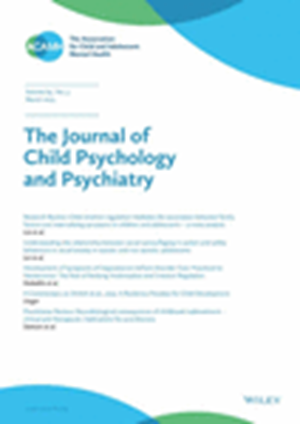社论:对乙酰氨基酚恐慌:关联vs因果关系。
IF 7
1区 医学
Q1 PSYCHIATRY
引用次数: 0
摘要
由于双胞胎高一致性和兄弟姐妹复发的风险,遗传因素在自闭症病因中的影响是没有争议的。环境风险对自闭症病因的影响尚不明确。虽然在世界范围内观察到的流行率上升使人们更加相信,这是一种由环境变化推动的流行病,但缺乏对流行率长期变化的这种解释的证据(formbonne, 2025年)。在流行病学调查中,没有时间或空间上的聚集性报告可以指向候选暴露。因此,观察性(队列和病例对照)研究是广泛的、探索性的,而不是假设驱动的。鉴于越来越多的证据表明,非典型发育发生在生命的头几个月(Dawson等人,2023;Lancet Neurology, 22,244),自闭症的环境风险研究一直集中在产前或孕产期暴露。在过去的20年里,自闭症风险和产前暴露之间有无数的联系:杀虫剂、邻苯二甲酸盐、空气污染物、孕妇孕期发热或感染、孕期间隔、缺乏叶酸补充、维生素D缺乏、孕妇饮食、父母年龄偏大、接触重金属、产前接触抗抑郁药、丙戊酸、苯二氮卓类药物、对乙酰氨基酚、孕妇吸烟、大麻或孕期饮酒、孕妇肥胖和妊娠期体重过度增加、早产、出生体重过低、孕妇免疫激活、剖腹产,催产素的使用,辅助生殖技术,还有无数其他方法。除了少数例外情况(父母年龄较大,产前接触丙戊酸),关联没有被复制,或者当它们被复制时,它们的因果性质没有被确定。本文章由计算机程序翻译,如有差异,请以英文原文为准。
Editorial: The acetaminophen scare: association vs causation.
With high twin concordance and sibling recurrence risk, the influence of genetic factors in the etiology of autism is not disputed. The contribution of environmental risk to the etiology of autism is less well established. While the prevalence increase observed worldwide has fueled beliefs of an epidemic driven by environmental changes, the evidence for such interpretations of the secular change in prevalence is lacking (Fombonne, 2025). In epidemiological surveys, no clustering in time or space has been reported that could point to candidate exposures. Thus, observational (cohort and case-control) studies have been wide-ranging and exploratory rather than hypothesis-driven. In light of growing evidence of atypical development occurring in the first months of life (Dawson et al., 2023, Lancet Neurology, 22, 244), environmental risk research in autism has focused on prenatal or periconceptional exposures. In the last 20 years, a myriad of associations have been reported between autism risk and prenatal exposure to: pesticides, phthalates, air pollutants, maternal fever or infection during pregnancy, inter-pregnancy interval, lack of folic acid supplementation, vitamin D deficiency, maternal diet, advancing parental age, exposure to heavy metals, prenatal exposure to antidepressants, valproic acid, benzodiazepines, acetaminophen, maternal smoking, cannabis or alcohol use during pregnancy, maternal obesity and excessive gestational weight gain, prematurity, low birth weight, maternal immune activation, C-section, use of oxytocin, assisted reproductive technologies, and countless others. With few exceptions (advanced parental age, prenatal exposure to valproic acid), associations have not been replicated, or when they have, their causal nature has not been established.
求助全文
通过发布文献求助,成功后即可免费获取论文全文。
去求助
来源期刊
CiteScore
13.80
自引率
5.30%
发文量
169
审稿时长
1 months
期刊介绍:
The Journal of Child Psychology and Psychiatry (JCPP) is a highly regarded international publication that focuses on the fields of child and adolescent psychology and psychiatry. It is recognized for publishing top-tier, clinically relevant research across various disciplines related to these areas. JCPP has a broad global readership and covers a diverse range of topics, including:
Epidemiology: Studies on the prevalence and distribution of mental health issues in children and adolescents.
Diagnosis: Research on the identification and classification of childhood disorders.
Treatments: Psychotherapeutic and psychopharmacological interventions for child and adolescent mental health.
Behavior and Cognition: Studies on the behavioral and cognitive aspects of childhood disorders.
Neuroscience and Neurobiology: Research on the neural and biological underpinnings of child mental health.
Genetics: Genetic factors contributing to the development of childhood disorders.
JCPP serves as a platform for integrating empirical research, clinical studies, and high-quality reviews from diverse perspectives, theoretical viewpoints, and disciplines. This interdisciplinary approach is a key feature of the journal, as it fosters a comprehensive understanding of child and adolescent mental health.
The Journal of Child Psychology and Psychiatry is published 12 times a year and is affiliated with the Association for Child and Adolescent Mental Health (ACAMH), which supports the journal's mission to advance knowledge and practice in the field of child and adolescent mental health.

 求助内容:
求助内容: 应助结果提醒方式:
应助结果提醒方式:


